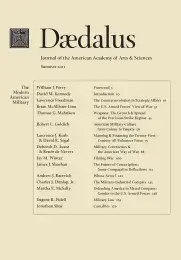Filming War
In the century since the outbreak of war in 1914, film directors have alternated between two approaches to filming war: the spectacular approach, aiming at a kind of realism, and indirection, drawing away from realism. The balance between these choices varies over three periods. The first is the era of silent films from 1914 to roughly 1930, including the overflow of silence into the first talkies. Silent films used indirection out of necessity, though the search for the spectacular was evident as well. The second is the era of World War II and after, extending roughly to 1970, when spectacular techniques brought a kind of realism to the cinematic representation of the “good war.” The third is the era of asymmetrical wars, since 1970, when many films used indirection at times more than spectacle to capture the moral ambiguity of warfare, and when the Holocaust entered the cinematic narrative of World War II.
The portrayal of military conflict in film is a mainstay of the industry. Box office considerations are never absent in the framing and gestation of commercial film, and the perennial popularity of films about combat–terrestrial or extraterrestrial– requires us to take measure of their power to represent war and men at war.
The film industry came of age as a centerpiece of mass entertainment at precisely the moment industrialized war arrived in 1914. That first world war helped globalize American film, which saw exponential growth at the same time the U.S. position in the war remained neutral.1 Many national industries flourished in the interwar years and after. It is impossible, however, to treat film in strictly national terms because the upheavals of the 1930s produced a massive hemorrhage of talent from continental Europe to London and Hollywood, among other destinations. European filmmakers such as Fritz Lang, Ernst Lubitsch, and Billy Wilder brought their art with them, and braided it together with American approaches to the medium. In this essay, I examine representations of war from a transnational perspective, but all the while recognizing the significance of nation . . .
